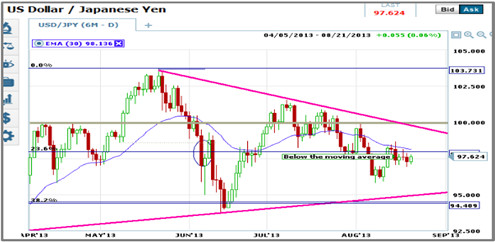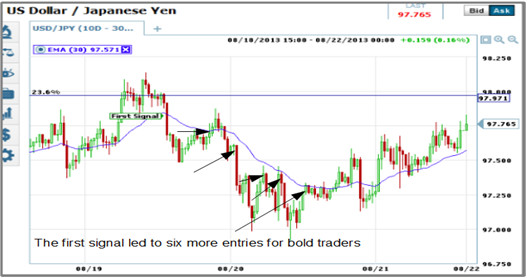The Geek Simple Moving Average Strategy – Defianly dont Suck!
The Geek reveals his basic strategy for trading popular forex pairs. The strategy focuses on short term moving averages, is trend following and can be used with other indicators. Moving averages are one of the most basic forms of technical analysis and often one of the most reliable.
Simple Moving Average Strategy For Binary Forex Options
This is one of the pillars of my personal trading system and an easy way to trade forex markets. It is a simple moving strategy but does not use a simple moving average. I prefer to use the exponential moving averages because it hugs prices a little tighter and helps you get into the right trades earlier. It is possible to advance this strategy with the addition of the simple moving average. With that addition it is then possible to measure extremes and take signals from crossovers but that is for a different time. Today I am focusing on the simple version of my moving average strategy. For this I am using a 30 bar exponential moving average and two time frames; daily and 30 minute. In each time frame the moving average will remain 30 bars.
Why Moving Averages?
Moving averages are a great way to measure trend and market strength. They measure the average price of an asset over time and can be of any length. They can also be manipulated in many ways, forming the foundations for a large chunk of technical analysis. The moving average, or rolling mean, produces a set of data that when plotted alongside prices measures trend. When prices are tending to close higher the moving average will move up, when prices are tending to close lower the moving average will close down. Using an exponential moving average means that the newest data has the most weight and the oldest data the least. This makes it a more current indicator than a simple moving average where all data points carry the same weight.
How this Strategy Works?
As I said this strategy uses the 30 day exponential moving average and two different time frames. I like to use multiple time frame analysis because it helps to weed out false signals. The first time frame is the longest and this one sets the underlying trend. The trend is your friend and I always like to trade with the trend. So, if on the daily charts the asset is above the 30 bar moving average the underlying trend is bullish. If it is below the 30 day moving average it is bearish. This must be taken under caution though because it is also important to see where price is relative to the longer term trend, support, resistance etc. If price is above the 30 day moving average but has been so for many weeks and the asset is approaching long term resistance I would be more cautious than if the asset had just broken above resistance and was crossing above the 30 day moving average with confirmation.

After determining the underlying trend and checking to make sure it was not too close to a possible turning point you can move down to charts of 30 minute bars. I usually use at least ten days to get a good view of where price is in relation to the past few days and any support/resistance. Assuming that the daily charts were bullish I will need to wait for bullish confirmation here as well.

The signal will be when price bounces from or moves back above the 30 bar EMA on the 30 minute chart. This could take a few hours so patience is key. If it takes a really long time for this confirmation signal to develop I always go back and check the daily charts again before moving on. Some days no signal will develop, some days you will get numerous signals. Typically expiration should be limited to 1-4 hours. The closer the asset is to a possible turning the point the shorter your expiration should be. Assuming bull market conditions any time the asset crosses from below or is above the 30 bar EMA and then pulls back to it is a buy signal. The first signal is hard to catch and the last signal can sometimes result in a loss but there are usually 3-5 good signals in between.
Why this Strategy Doesn’t Suck
This strategy doesn’t suck because it works. It works because it is based on sound, simple and easy to use technical analysis. Analysis used by nearly every trader in the market today. It is also the foundation for more advanced techniques and a great starting point for new traders. Moving averages are one of the pillars of technical analysis and something every trader should know how to use. By properly applying this strategy it is possible to achieve consistent results on a day to day basis.
Why This Strategy May Suck and Conclusion
I don’t think this strategy sucks. I could be wrong. If you think it sucks leave me message or post it in our Binary Options forum and we could talk about it.